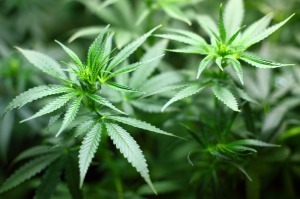If you already hold a medical cannabis card or a recommendation, you most likely know and experience the health benefits of marijuana. However, you probably ignore that medical cannabis is not an amazing finding of our times. It has a long history, in fact.
The discovery of the medical properties of cannabis can be traced back to thousands of years, and it is linked with the most antique way of consuming the cannabis plant: eating its seeds. The cannabis seeds have a high nutritional value, and they grow inside the feminine flowers. These feminine pollinated flowers are what we known as the buds. And the buds are precisely the richest source of psychoactive and medically valuable cannabinoids. Probably, the medical properties of cannabis where discovered when processing and consuming the seeds.

Medical Marijuana
Medical Use of Cannabis in History
About 2,800 years B.C., a Chinese emperor, and father of traditional Chinese medicine studied thousands of plants and compiled hundreds of natural remedies in what is considered one of the most antique medicine books of the world. One of the remedies he praised was cannabis. The flowers of the feminine plant were used to overcome yin (feminine energy)loss, as in menstrual cycle symptoms, rheumatism, malaria, constipation, and memory losses. In the second century, a famous surgeon named Hua To, used a mixture of hemp resin and wine as anesthesia, and performed even complicated surgeries.
There has also been found some reference about the medical use of “Kannabis” by the ancient Greeks. In 400 B.C. they were already using it for back pain, and it was in 70 A.C when a Greek doctor named Discordes wrote a book where he registered 600 plants. He identified the Cannabis Sativa L, whose seeds´extracts could be used to treat ear pain and sexual desire.
In 1621, in Anatomy of Melancholy, Robert Burton suggested that cannabis could be an effective treatment for depression.
It was in 1814 when Nicholas Culpepper published a book that registered all the known medical uses of cannabis. He included all the uses known since ancient ages, and the most recent ones, such as: regulate intestinal function, alleviate cramps, reduce head inflammation and alleviate joint pain. Culpepper also believed that cannabis could be added to ointments to treat burns.
Medical Cannabis Rebirth
With the augment of marijuana consumption among the young population during the 60´s, scientific research started to emerge. But it was the appearance of chemotherapy and AIDS what gave an important impulse to the topic of medical cannabis. In 1998, an interview carried on b Microsoft News Broadcasting Service showed a surprising 90% of public acceptance of marijuana use for medical purposes. After California and Arizona had legalized medical marijuana, President Clinton allowed making an investment of $ 1million to review the investigation done by the Institute of Medicine. As a result, in 1999, the Institute of Medicine finally published a report where authors informed about the possible therapeutic value of the cannabinoids, particularly for pain relief, appetite stimulation, and vomits and nausea control. Although all the possible benefits were not mentioned in this report, it has the importance of lastly counting on the official acknowledgment of cannabis as a medical resource.


